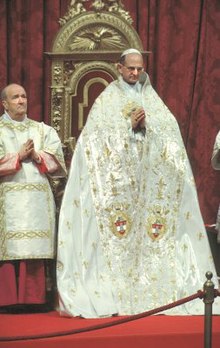The Orthodox would see a bishop con-celebrating Mass with his clergy as a sign that the bishop can do nothing without his his clergy, and therefore with his Church, it is an important sign that he is in communion with them as much as they are in communion with him. In many ways it is sign that he can do nothing apart from his clergy and the local Church. Con-celebration in the East is an important ecclesiological sign about the dependence of a bishop.
Cardinal Cañizares Llovera has often said that Con-celebration is not part of our Western tradition and that document on the liturgy in long gestation by the CDW which was supposed to be issued in July but is unlikely to appear at all now, was rumoured to clarify the use and theology of Con-celebration, which appeared after VII without any explanation or much understanding of precisely what was happening. We introduced an oriental practice and imposed it on our occidental Eucharistic theology.
In the West the same theology of the dependence of the bishop was actually signified by other rituals. the bishop could only celebrate Mass as a bishop when surrounded by his minister, sacred and otherwise. Pontifical Mass needed the sign of assistant ministers to take place.
One of the particular aspects of the Pontifical Liturgy was that the Pope literally could do nothing without help. The ancient Papal vestments signified this dependence. The sedia gestatoria used both by the Roman Pontiff, might well have ended by being a sign of medieval power rather than dependence but many other vestments such as the falda the long skirt like vestment that extended below the hem of the alb or the papal mantella, the long cope, meant that the Pope could not even walk without assistance. They were a sign to both Pontiff and the world that nothing the Pope did was done on his own. Far from being signs of the Church Triumphant they were actually signs that the Pope's actions were restricted and absolutely dependant on those around him.







0 comments:
Post a Comment